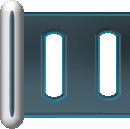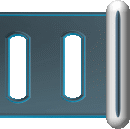|
Before the law protects the elephant seals, the hunters of whales, on the return to an often disappointing expedition, and as to relieve their resentment towards the animal kingdom, were transformed into real butchers and began massacring pinnipèdes on the territories of the reproduction. It real slaughters, we prefer to cross(spend) him(it) under silence. But the first hunters of seals were amazed by the inexhaustible streams of blood which lost their victims: 200 liters! Impressive figure, compared with the 5 liters of the human being! The elephant seal possesses approximately twice more blood than the man by book(pound) of muscle, because its fat, which represents 40 % of his(her,its) weight, is very weakly irrigated. To pump this enormous liquid mass feeder and considering its size, the animal possesses a completely "common" heart - in no way hypertrophied. To cetaceans, the heart is also hardly proportionned in the size. We can wonder that nothing no singularise the cardiac muscle of dolphin(dauphin), for example, while most of its other organs are highly specialized. But the maritime Mammals, due to their usual horizontal posture and their weight practically nobody in the water, do not require(demand) their pump - that a restricted enough effort. Complex networks of tiny blood vessels, which run(roam) in fat tissues on both sides of the spinal column, establish(constitute) the most striking characteristic of the circulatory system of cetaceans. Arteries and veins form what there what we call retia mirabilia or " admirable networks ". We speculated a lot on their role. Certain psychologists consider that their function(office) is to control the sudden variations of pressure which intervene during the dive. But this hypothesis is unfounded. The pressure, in fact, balances itself automatically in all the physical fluids, and the only parts(parties) of the body to be really suffered from variations of pressure are cavities filled(performed) with air(sight). Some retia hide of small surfaces around the brain, as well as the pelvienne region, which shelters the reproductive device: they serve for irrigating these vital organs (for the individual and the sort) during the dive. In a general way, it seems well that the first function(office) of the admirable networks is the stocking of a certain quantity of blood rich in oxygen, which will be used during the subaquatic journey apnée.
|


